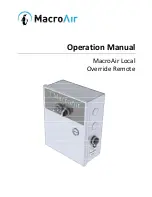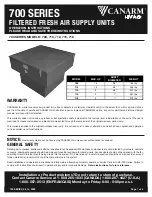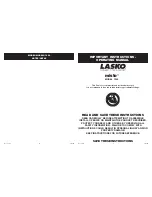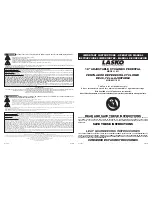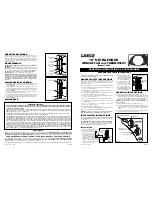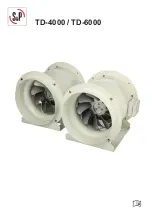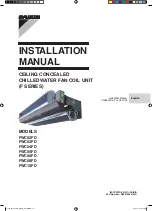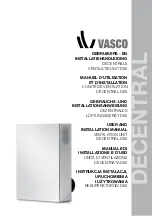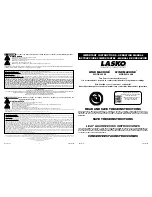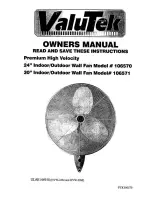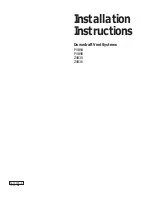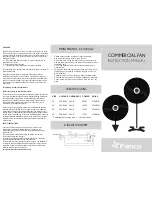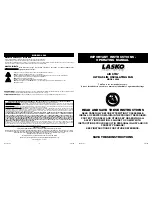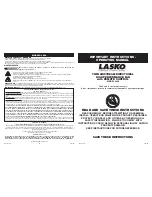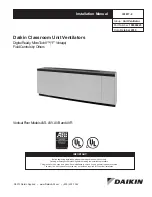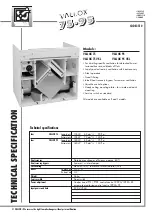
Hanging the Fan
REMEMBER
to turn off the power. Follow
the steps below to hang your fan properly:
Step 1.
Remove the decorative canopy
bottom cover from the canopy by turning the
cover counter clockwise.(Fig. 5)
Step 2.
Remove the hanger bracket from the
canopy by loosening the two screws on the
bottom of the hanging bracket
from the screw head and turning the canopy
counter clockwise.(Fig. 5)
Step 3.
Secure the hanger bracket to the
ceiling outlet box with the screws and
washers provided with your outlet box.
Step 4.
Pass the 120-volt supply wires
through the center hole in the ceiling hanger
bracket.(Fig. 6)
Step 5
. Remove the hanger pin, lock pin and
set screws from the top of the motor
assembly.
NOTE:
Step 6.
Route wires exiting from the top of
the fan motor through the collar cover,
canopy cover, canopy and then through the
a half turn
If a longer downrod is needed, take
out the screw located in the hanger ball,
lower the hanger ball and remove the pin,
remove all 3 pieces from the downrod and
assemble them onto the new longer downrod
before proceeding step 6. (The longer
downrod is available at any Home Depot
store)
4.
WARNING
FAILURE TO PROPERLY INSTALL LOCKING PIN
AS NOTED IN STEP 7 COULD RESULT IN FAN
LOOSENING AND POSSIBLY FALLING.
Step 8.
Tighten two set screws on top of the fan
motor firmly. (Fig. 7)
Step 9.
Place the downrod ball into the hanger
bracket socket. Rotate the downrod ball until
the groove of the downrod ball lines up with
the hook of the hanger bracket. (This will help
balance the fan.)
Step 7.
Align the holes at the bottom of the
downrod with the holes in the collar on top of
the motor housing (Fig.7). Carefully insert the
hanger pin through the holes in the collar and
downrod. Be careful not to jam the pin against
the wiring inside the downrod. Insert the
locking pin through the hole near the end of
the hanger pin until it snaps into its locked
position, as noted in the circle inset of Fig. 7.
Figure 5
Ceiling
canopy
Canopy
cover
Mounting
screws
(supplied with
electrical box)
Hook
UL Listed
electrical
box
Figure 6
120V Wires
Washers
Figure 7
Hanger
bracket
Hanger
bracket
Motor wires
Ball/downrod
assembly
Hanger pin
Locking
pin
Collar cover
Downrod
Canopy
Canopy cover
Set screws

















